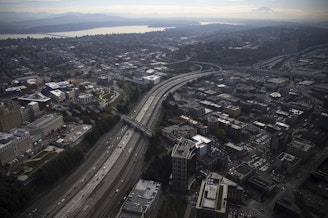'They're treasures': Advocates want more protections for Seattle's big trees
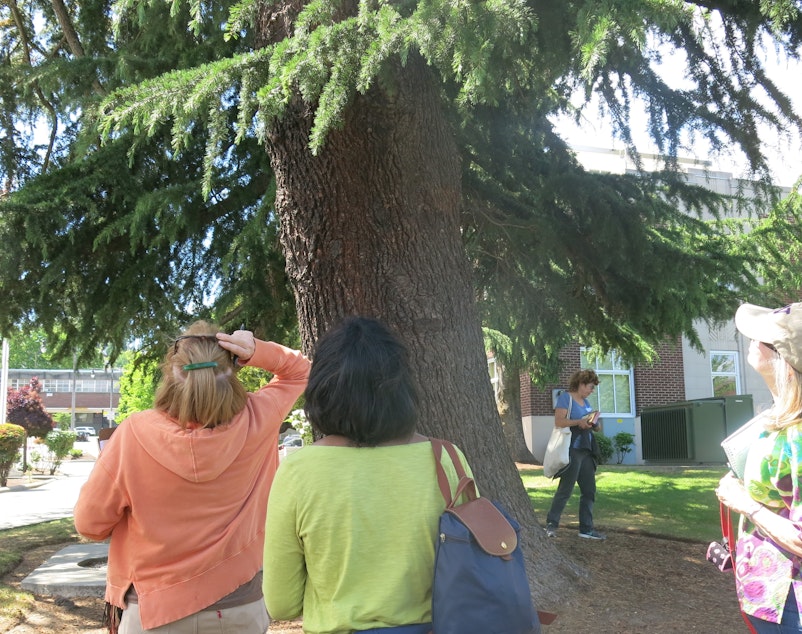
Efforts to update Seattle’s tree regulations fizzled last year. Now a new effort to protect the city's trees is under way.
New legislation is expected to be unveiled in coming weeks by the City Council. Advocates say the most important thing Seattle can do now is retain the trees it currently has, especially in more environmentally stressed neighborhoods.
The group Plant Amnesty is encouraging the public to photograph and help map Seattle’s remaining big trees: any tree that is 30 inches wide or more – basically the width of a front door. They believe there are roughly 6,000 left that fit this description in the city.
Dominic Barrera is Plant Amnesty’s Executive Director. He said living near South Park, he’s grateful for trees that provide a buffer from warehouses and Boeing Field.
“Looking at that juxtaposition of the industrial district and then a few trees that protect us from it just really shows how important these trees are for everybody,” he said. “Especially those of us living in those environmentally tarnished areas.”
The City Council proposed a new tree ordinance last year, but tree advocates were disappointed that it appeared to weaken protections for “exceptional” trees – the big trees that help most with cooling, carbon emissions and stormwater. Ultimately nothing passed. Councilmember Sally Bagshaw plans to introduce a new version of tree legislation this summer, with input from the city’s Urban Forestry Commission.
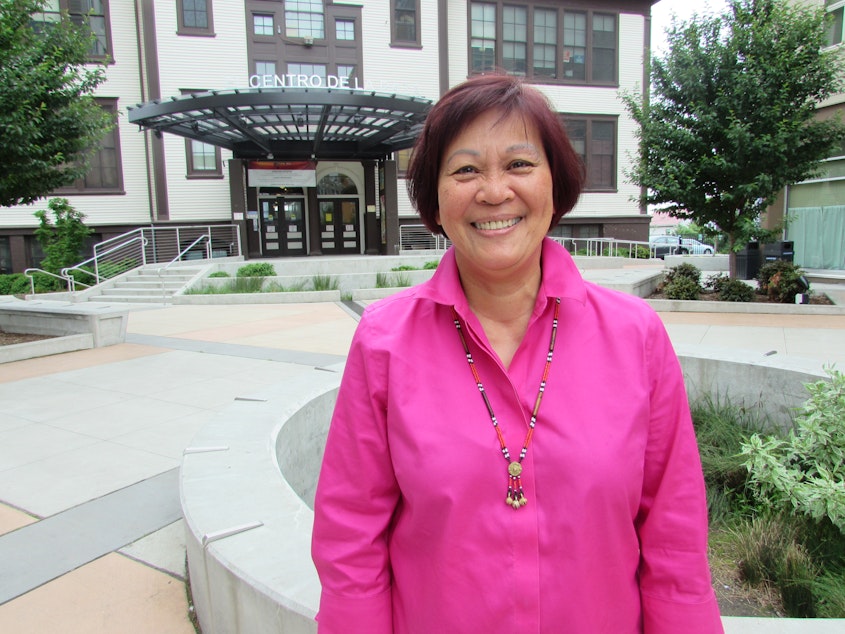
Sponsored
Maria Batayola wants Beacon Hill residents to be represented in this effort. She is the Environmental Justice Coordinator for El Centro de la Raza. The Beacon Hill neighborhood is bounded by interstates and airfields. It’s got air and noise pollution and faces additional pressures from upzoning.
Batayola has heard the argument that increased density in cities helps address climate change – but she said people in Beacon Hill need trees and green space for their own health.
“If you really are dealing with and understand environmental justice, then you have to look at the impact on people of low income and people of color,” she said. “I think there is a balance that we’re looking for. And in Beacon Hill, our first responsibility is to the residents.”
El Centro de la Raza recently sent a letter asking Councilmember Bagshaw to support the recommendations of the city’s Urban Forestry Commission “and that for any environmentally challenged neighborhoods and communities such as Beacon Hill, that there be a higher tree canopy goal” to bring them more in line with the rest of the city, Batayola said. The neighborhood scored a victory recently with the preservation of the orchard around the historic Garden House.
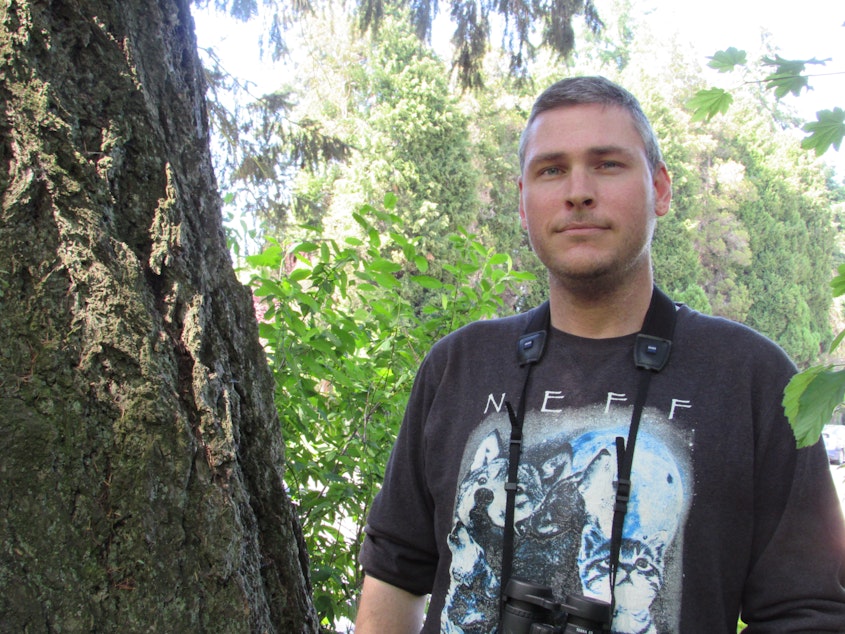
Sponsored
In Northeast Seattle, the century-old Douglas Firs around the Seattle Audubon office make visitors feel like they’re deep in the woods. Joshua Morris is the urban conservation manager with Seattle Audubon and serves on the city’s Urban Forestry Commission. He said he’ll be watching for more tracking and protections for existing trees.
“We’ll never see the size of these trees again. So where we do have them, they’re treasures, and hopefully we can convince Seattleites of that, and write something into the tree protection ordinance.”
A 2016 assessment found Seattle had 28 percent canopy cover, short of its 30 percent goal. Morris said current city regulations don't do enough to protect mature or “exceptional” trees. “There’s a lot of loopholes in it,” he said. “Basically you can just cut down a tree and grind the stump down to the earth and if nobody notices, there’s no penalty whatsoever.”
While these advocates say city protections fall short of what’s needed, Seattle does require permits to remove trees from public rights of way. On developed land, approval from the Department of Construction and Inspections is required to remove an exceptional tree, trees in environmentally critical areas (ECA), or more than three trees six-inches or greater.
“If you are developing your property,” SDCI states, “you have more flexibility to remove trees if they prevent you from using your property.” But it says developers can receive more credit toward tree retention requirements if they retain mature, healthy trees.
Morris said even those existing trees are facing more stress now.
“Our climate is changing. Insect invasions are going to become common. Droughts are going to become extended,” he said. “So where we wouldn’t have had to water trees in August, we will have to start watering.”
But he said the new regulations have to strike the right balance so property owners will adhere to them. “There’s difficulty insuring compliance, getting private property owners to actually comply with a tree ordinance, not making it onerous or too high a permit fee,” he said.
Sponsored
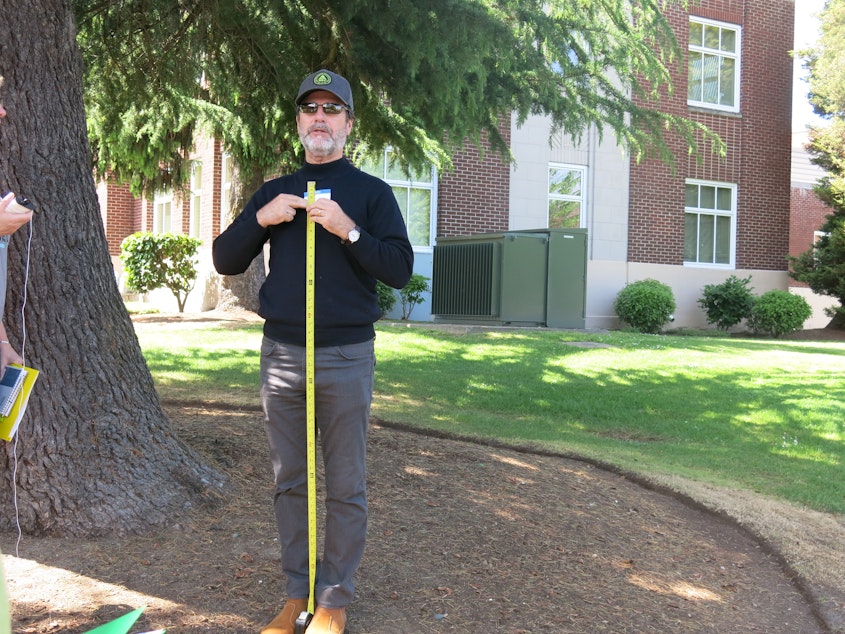
Developers will be paying attention to whether new regulations increase the costs of building projects, or restrict what can be built. Pat Foley is a developer with the firm Lake Union Partners.
“As we’re trying to build housing in this city for the demand that’s out there -- and especially affordable housing which is in great shortage -- any potential ordinance could affect our ability to move these projects forward,” he said.
Foley’s firm is building the Midtown: Public Square project at 23rd and Union in Seattle, which includes affordable housing and a central plaza where the plan is to install a large, mature tree. He said the tree proposal was not welcomed by everyone on the city’s Design Review Board.
“There were a number of people on the board that didn’t like the idea of a tree in there because they thought it would be providing too much shade” or block visibility, he said. “We were sort of perplexed by that given that it was a significant expense” to include it. The tree was ultimately approved.
The City Council’s previous legislative proposal included fees a developer could pay if they do remove a tree, with the money going to plant trees elsewhere. Foley says he’d rather install the trees himself. “I would like to just see us plant more mature trees as part of a new development on a property,” he said. “So Day One they look like they’ve been there a long time.”
Sponsored
He said there’s no requirement now for developers to plant larger or more mature trees, but adding those trees could help Seattle meet its goal to increase canopy.
The suburb of Lake Forest Park requires permits for removing trees. They’ve seen their tree canopy increase in the last few years from 46 percent to nearly 50 percent.
Lake Forest Park City Council member John Resha said, “Our regulations are focused on the end state of maintaining and growing canopy rather than restricting removal.” But he said, “There is one place where we say no.” That’s the removal of trees that qualify as ‘exceptional.’ “These quiet giants are part of the fabric of our city,” Resha said. He said they’ve successfully grown their canopy by creating a city code “that resonates with its community.”
Editor's Note : This story has been modified to clarify Seattle's current restrictions on tree removals. 6/4/2019.




